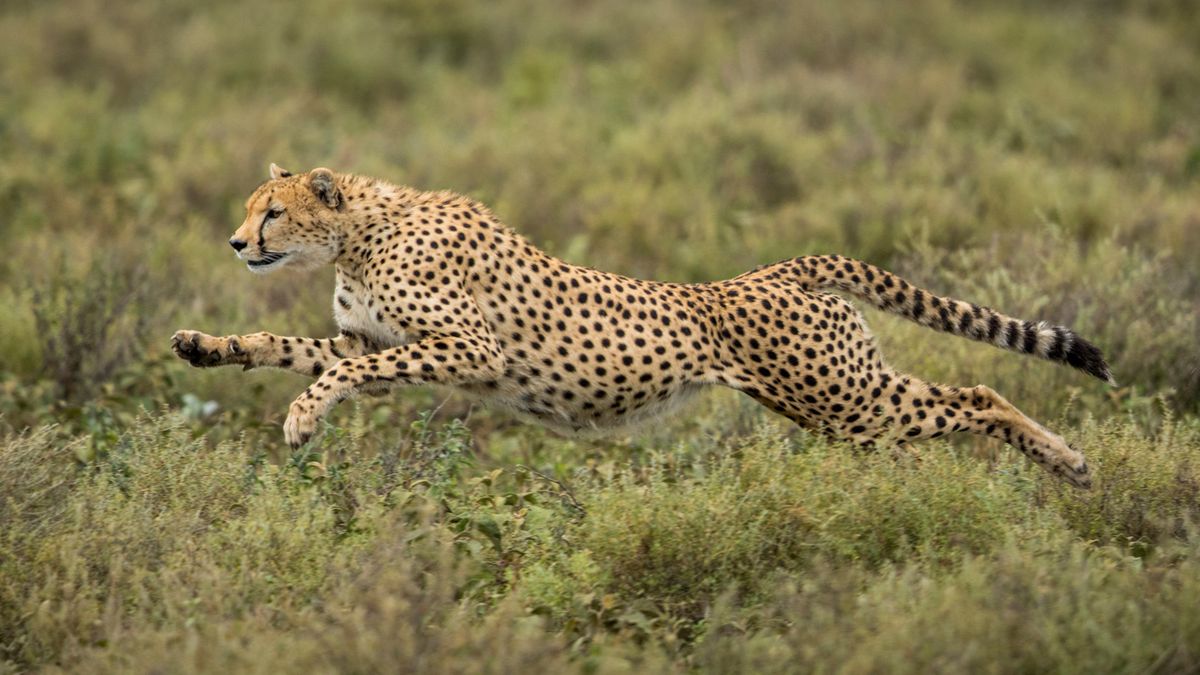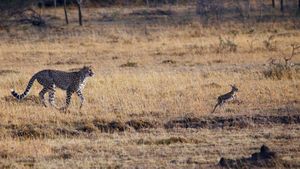Cheetahs in India were officially declared an extinct species in 1952 by the Indian Government. It is believed that the last of the three large cats were killed during hunting by Maharaja Ramanuj Pratap Singh Deo of Korea, Madhya Pradesh, in 1947. Excessive poaching, hunting, and a lack of maintenance of their habitat led to the extinction of Cheetahs in India.
The cheetah was an animal of pride for India, just like the Asiatic lions. Originating from the Sanskrit word Chitarka, meaning the spotted one, cheetahs are the fastest mammals on earth. They can cover 113 km in approximately an hour!
The history of cheetah in India
Almost 70 years later, the growl of this magnificent animal echoes in the Kuno National Park in Madhya Pradesh. But the story of bringing them back began much earlier.
In 1970, the Government began negotiations with the Shah of Iran to bring Asiatic Cheetahs to India in exchange for the Asiatic lions. Unable to complete the exchange, attempts were made again in 2009 to bring the Cheetah to India.
Between 2010 and 2012 ten sites were surveyed for cheetah relocation to India. Finally, The Kuno National Park (KNP) in Madhya Pradesh was deemed fit to house the big cats. KNP has minimal management intervention and protected habitat to help endangered species thrive. The park had received investments to make an area for the Asiatic lions, also an endangered species.
After 70 long years, India signed a pact with Namibia in July 2022 to reintroduce Cheetahs in the country. From Windhoek, Namibia’s capital, a total of eight Cheetahs left for India on September 16, 2022 and reached Jaipur airport on September 17, 2022. These include five female and three male Cheetahs. On Prime Minister Narendra Modi’s 72nd birthday, September 17, 2022, these eight magnificent mammals were released in the wild.
It is believed that the release of these eight fierce felines is part of a bigger plan to reintroduce Cheetahs to their former habitat. The Ministry of Environment, Forest and Climate Change plans to release 50 Cheetahs in India’s different national parks over a period of five years. The inaugural eight arrivals from Namibia have been vaccinated, fitted with a satellite collar, and kept in isolation before their release.
These chosen eight cheetahs left were assessed before being sent to India’s Kuno National Park. Based on the cat’s wild disposition, hunting skills, and genetic predisposition to rebuild the population and overall health, eight cheetahs set sail from Africa’s southwestern coast to Jaipur and, finally, Kuno National Park.
Project Cheetah India is the world's first inter-continental large wild carnivore translocation project and is believed will benefit the Indian ecosystem as a whole, not just cheetahs. These top predators restore a historic balance of evolution that benefits all species in the wild. Their restoration will uplift the livelihood of forest-dwelling communities, along with providing these non-native mammals with enough prey in the park to maintain a food chain balance in the ecosystem cycle.
Cheetah extinction explained in India
Before 1947 cheetahs roamed in large numbers throughout central India, the Middle East, and Sub-Saharan Africa. Habitat loss and poaching led to a fall in their population, especially in India. Today the spotted felines are found in Namibia, Botswana, Kenya, and Tanzania.
According to the World Wildlife Fund, there are less than 7000 cheetahs left in the wild, out of which only 12 are adults. These fierce felines are known for their strength, speed, and predatory skills.
Eight Nambian cheetahs in IndiaThe five female and three male cheetahs who now call Kuno National Park their home will be under quarantined observation for a month before they are let completely loose. Their two sets of siblings–male cheetahs, Alton and Freddy, and female cheetahs Savannah and Sasha. The other four are Obaan, Asha, Cibili and Saisa. |





